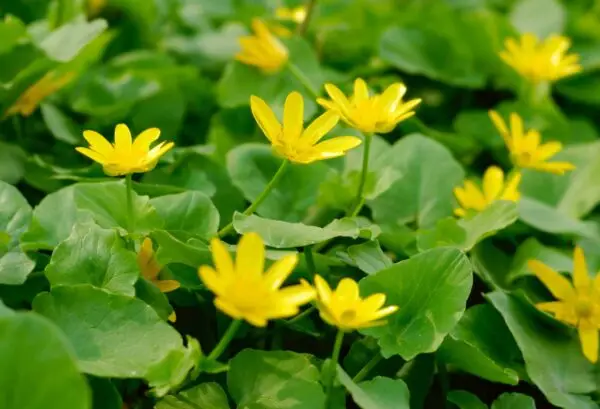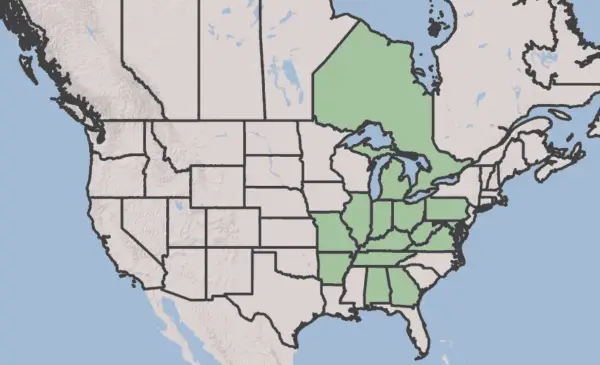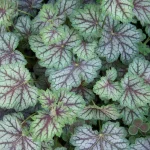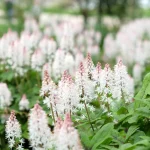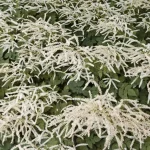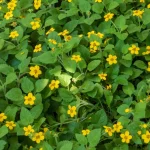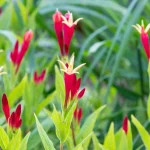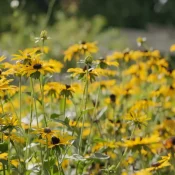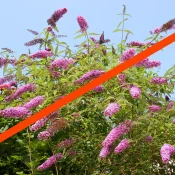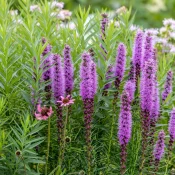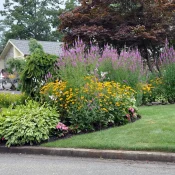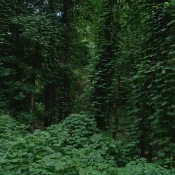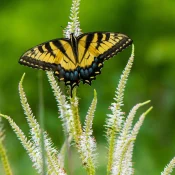Celandine Poppy
If you live in the Mid-Atlantic and have a large shady spot, this might be the plant for you. Celandine Poppies cover themselves in bright yellow flowers in the early spring and bloom again in the late fall. They are easy to grow, short—perfect for borders—and stay green throughout the summer. A full-proof flower to plant and adore, year after year. Scroll on for planting tips.
- Part Sun, Full Shade
- Short (under 3')
- Fall flowers, Spring flowers
- Pollinator lifeline
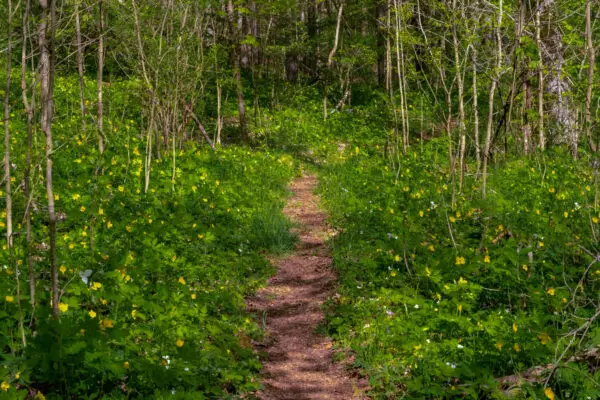
What are the benefits of planting Celandine Poppies?
Celandine Poppies are plants native to North America. This means they have happily grown without human intervention for thousands of years.
Native plants are always the best choices for our gardens because they provide maximum beauty and wildlife support with minimum work. If native plants can plant themselves without human help, we can happily plant them too, and enjoy fuss-free landscapes.
Celandine Poppies bloom twice!
One of the coolest things about this shade-loving native flower is that Celandine Poppies often bloom 2x a year: once in the spring, and again in the fall. In between, its green beautifully shaped leaves stay verdant and bright. It’s a lovely addition to any shade or part-shade garden.
You may be thinking—I’ve heard of the name Celandine before. This leads us to introduce…
The “Celandine Confusion”
We’re borrowing a headline from the New York Times here. You may be looking out your window and seeing tiny yellow flowers in the spring and thinking…
Are those Celandine Poppies?
Well, to make spring gardening extremely confusing—two yellow flowers bloom in the spring with extremely similar names. They are:
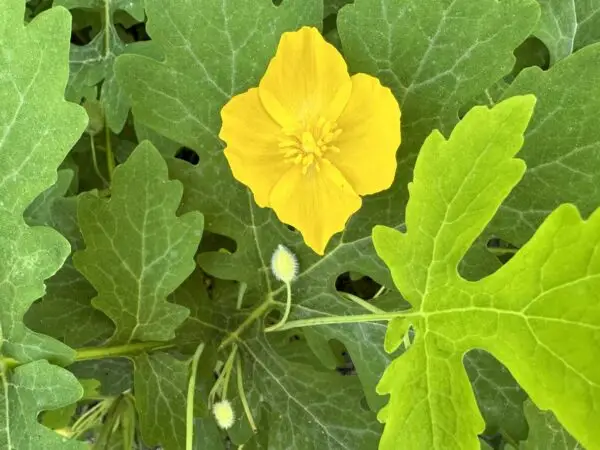
Celandine Poppy
Stylophorum diphyllum
Four-petaled yellow flowers emerge in the spring. Sometimes called Wood Poppy. Native to North America—plant away, native plant lovers!
Lesser Celandine
Ficaria verna
I know—can you believe the name is so similar? This 7-12 petaled spring flower is a ‘Eurasian weed‘ that can overtake an area in a few seasons. It is very difficult to remove once its taken root.
Remove Lesser Celandine when you can
If you happen to have Lesser Celandine in your garden, join us on a multi-year commitment to removing this whenever spotted. Sadly, once this plant gets to spread its seeds, it can require years of whack-a-mole removal. But remove them we must! These non-native flowers can quickly overtake an area in a few years.
Plant Celandine Poppy—it’s endangered in some areas
The native gem Celandine Poppy has sadly become missing from some of its core native areas—Canada in particular. Plans are in place by the Canadian Wildlife Service – Ontario Region to help bring this native flower back to regions where it was once ubiquitous.
Where is Celandine Poppy native?
Celandine Poppy is native to the Mid-Atlantic and parts of the Midwest.
How to grow Celandine Poppy
Celandine Poppies love shady, damp areas. Their natural habitat is beneath trees that shed leaves to keep the soil consistently moist and always full of organic matter. If you have a spot in your landscaping that sounds similar, that is the spot to plant Celandine Poppies.
Here is a quick overview of a gardener’s use of Celandine Poppies in their garden (along with some native azaleas!)
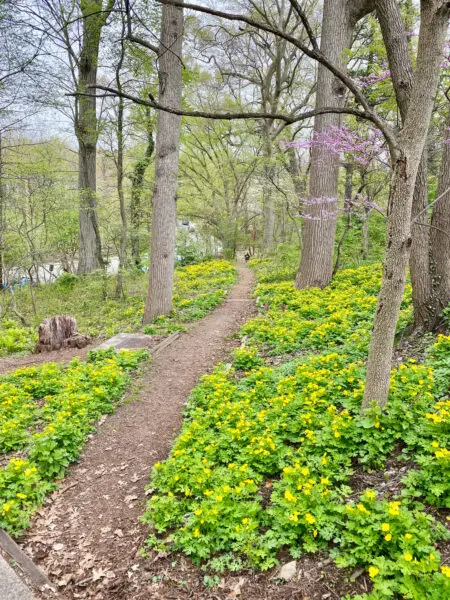
Give Celandine Poppies space: they can overtake an area
Celandine Poppies are sometimes called ‘thugs‘ by gardeners because they can self-seed and overtake an area over the years.
But not all native plants that easily spread are bad! Celandine Poppy is ideal for covering large shady expanses. While they might not be perfect for a small mixed shade garden, they are perfect for larger shade spaces alongside other native shade-loving plants.
Celandine Poppy is deer-proof
Deer do NOT eat Celandine Poppy. If you’re worried about deer nibbling your garden, planting Celandine Poppy is a good native gardening choice.

When happy, Celandine Poppies will bloom for 10-20 years
What a generous, long-lived perennial flower. Once growing, Celandine Poppies can come back again and again for 10-20 years. This is on top of their twice-blooming ability.
Where can I buy Celandine Poppy?
Sadly, many native plants are not regularly stocked at conventional plant nurseries. The good news is that they are out there—if you know where to look! We’ve assembled four resources to help find Celadine Poppies in your area:
Where can I find seeds and plants?
Finding native plants can be challenging (we partly blame Marie Antoinette.) To make it easier, we’ve assembled four sourcing ideas.
Native Nursery List
300+ native nurseries makes finding one a breeze
Online Native Plant Sellers
We've included 100+ online resources to help
Society Plant Sales
Every state has a native plant society; find yours
Online Communities
Local Facebook groups are a great plant source
What to plant with Celandine Poppy
According to Brooklyn Bridge Park, “Leaves can look ragged in summer when left unwatered, so it’s good to plant Stylophorum [Celandine Poppy] behind plants that can hide it or plan to cutback.”
To heed this advice, pair Celandine Poppies with other native plants that like shade and moist areas. Plants like Alum Root and ferns are perfect pairings.
Celandine Poppy is an excellent native flower for any shady, consistently moist area. Because they are short, they are also perfect for borders or underneath trees. Plant them once and they will come back, year after year. Happy planting!
Sources
- Harstad, Carolyn. Got Sun? 200 Best Native Plants for Your Garden. (2013), 5.
- Roach, Margaret. Look Fast: It’s Spring Wildflower Season. New York Times, April 28, 2021.
- Bowles, Jane M. 2006. Recovery Strategy for Wood-poppy (Stylophorum diphyllum) in Canada. 24 pp. (PDF).
- Wikipedia, Ficaria Verna.
There are plenty of options for shade.
